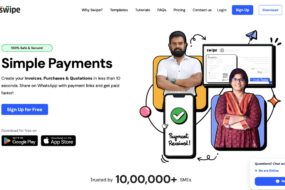National demographics are shifting toward an older population. According to a new report from the Consumer Technology Association (CTA), the U.S. market for active aging technology encompasses 85 million Americans. That’s more than 25% of the population. Research from CTA demonstrates that seniors strongly desire to live independently and at home. However, despite the fact that more and more seniors are using desktops and mobile devices, CTA research reveals that seniors who are 70 and older are not typically aware of active aging technologies and how to use them.
CTA Foundation as well as a growing number of other public and private entities are making it a part of their mission to help seniors understand and use technologies so they can enhance their lives. Companies, nonprofits and government agencies are striving to design technologies, partner with other entities, and teach seniors how to utilize the newest technologies to achieve a higher quality of life.
Design
As our bodies age, we face various challenges. Many seniors develop issues with sight, hearing, dexterity, and memory. Most of our technologies have been geared to younger generations, who typically have yet to face the challenges that time brings. Now, companies across the country are designing and developing products more accessible to seniors and aligned with their needs.
The Oscar Senior is an application that turns a tablet into a remote-controlled device, by which family members can remotely assist their loved ones with surfing the web or posting a picture on Facebook. Oscar Senior has large prompts and prints for both easier visual and touch screen access. The features on the application are more limited than a typical tablet and can be tailored to meet an individual’s needs. This makes the device less intimidating because seniors only have to remember how to use a discrete number of features. Users can get medication reminders. And they can easily video chat with family and friends.
The grandPad, designed specifically for older consumers, is a modified version of the android tablet. It also has a more simple interface for ease of use. Phone and video chats are accomplished by simply tapping the picture of the person the senior wants to contact. The email application uses voice recording (thus, typing with arthritic fingers is unnecessary). An email can be accomplished in only a couple clicks. This device also offers 24-hour tech support with the touch of a single button.
Among the many other elder-friendly devices currently on the market are the following: Breezie, a simplified interface that utilizes a Samsung tablet; Telikin desktops and laptops with easy to use touchscreens and simplified interface; Jitterbug Touch, a Samsung smartphone with a brightly colored screen, simplified and easy to read menu, and live tech support; and AARP’s RealPad, an affordably priced touch screen tablet featuring large graphics, icons and interfaces as well as 24/7 support.
In-Person Learning
Some seniors are well aware of the digital revolution and know how to use even the newest technologies. Regardless of a person’s age or level of technical skill, older adults want to learn more. Seniors who have not dabbled in the wired world have found in-person learning very effective and encouraging. At the state and national level, various institutions, organization and companies sponsor or provide live, in-person technology classes, which are geared toward educating older adults.
- Publicly Funded Classes and Workshops
In every state, publically funded senior or community centers, libraries, universities and community colleges as well as other city or county agencies and institutions offer live adult education classes. These are usually provided to the public at either a low cost or no cost and include at least basic desktop computer skills.
- National Organizations and Partnerships with Live Courses
In addition to publically run state and local classes, an increasing number of national non-profit organizations, which often partner with or receive funding from private companies, provide in-person training. Three major national organizations that provide tech training for older adults follow:
SeniorNet offers 130 instructor-led tech courses on a variety of tech devices at 30 learning centers across the United States.
Oasis Connections host free computer, Internet and mobile technology classes in 30 U.S. cities. They are sponsored by and partner with corporations, like AT&T and Home Instead Senior Care, local libraries, job help centers, senior centers, and faith-based organizations where classes are offered.
AARP Technology Education and Knowledge (TEK) Workshops are free online learning and in-person technology workshops on computers, tablets and smartphones. These courses are offered in cities across the U.S.
- Private Business with In-Person Training
BoomerTECH Adventures is dedicated to helping Boomers and Seniors create, connect, and contribute using today’s technology. They take a personalized approach to education in their expert workshops, which increases they find participants’ knowledge and comfort using technology. The company offers one-day and multi-day retreats in lovely Maine settings, training for individuals and groups, and online digital resources.
GroovyTek offers in-home, on-site and online training. Although their training is not solely for older adults, it stands ready to answer their call. GroovyTek describes its business as “designed to help users grasp personal technology in relatable, understandable terms.” Their trainers “develop meaningful relationships with their customers by providing one-on-one, consultative … sessions that are designed specifically around each student’s needs.”














